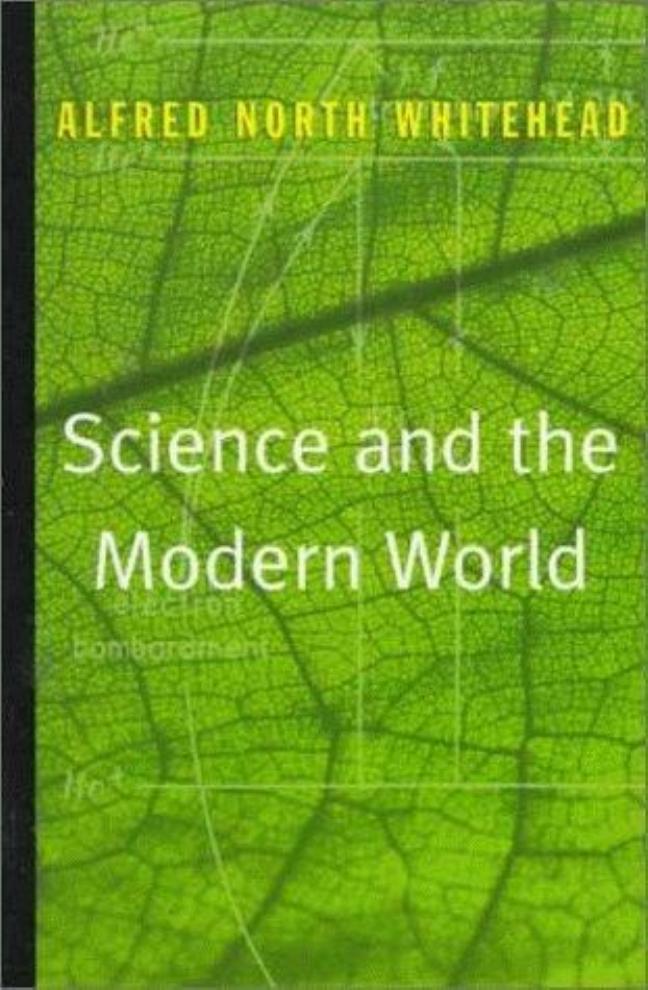Science and the Modern World by Alfred North Whitehead

Author:Alfred North Whitehead
Language: eng
Format: epub, pdf
Publisher: Open Road Media
Published: 2020-07-15T00:00:00+00:00
Chapter VII
Relativity
In the previous lectures of this course we have considered the antecedent conditions which led up to the scientific movement, and have traced the progress of thought from the seventeenth to the nineteenth century. In the nineteenth century this history falls into three parts, so far as it is to be grouped around science. These divisions are, the contact between the romantic movement and science, the development of technology and physics in the earlier part of the century, and lastly the theory of evolution combined with the general advance of the biological sciences.
The dominating note of the whole period of three centuries is that the doctrine of materialism afforded an adequate basis for the concepts of science. It was practically unquestioned. When undulations were wanted, an ether was supplied, in order to perform the duties of an undulatory material. To show the full assumption thus involved, I have sketched in outline an alternative doctrine of an organic theory of nature. In the last lecture it was pointed out that the biological developments, the doctrine of evolution, the doctrine of energy, and the molecular theories were rapidly undermining the adequacy of the orthodox materialism. But until the close of the century no one drew that conclusion. Materialism reigned supreme.
The note of the present epoch is that so many complexities have developed regarding material, space, time, and energy, that the simple security of the old orthodox assumptions has vanished. It is obvious that they will not do as Newton left them, or even as Clerk Maxwell left them. There must be a reorganization. The new situation in the thought of today arises from the fact that scientific theory is outrunning common sense. The settlement as inherited by the eighteenth century was a triumph of organised common sense. It had got rid of medieval phantasies, and of Cartesian vortices. As a result it gave full rein to its anti-rationalistic tendencies derived from the historical revolt of the Reformation period. It grounded itself upon what every plain man could see with his own eyes, or with a microscope of moderate power. It measured the obvious things to be measured, and it generalised the obvious things to be generalised. For example, it generalised the ordinary notions of weight and massiveness. The eighteenth century opened with the quiet confidence that at last nonsense had been got rid of. To-day we are at the opposite pole of thought. Heaven knows what seeming nonsense may not to-morrow be demonstrated truth. We have recaptured some of the tone of the early nineteenth century, only on a higher imaginative level.
The reason why we are on a higher imaginative level is not because we have finer imagination, but because we have better instruments. In science, the most important thing that has happened during the last forty years is the advance in instrumental design. This advance is partly due to a few men of genius such as Michelson and the German opticians. It is also due to the progress of technological processes of manufacture, particularly in the region of metallurgy.
Download
Science and the Modern World by Alfred North Whitehead.pdf
This site does not store any files on its server. We only index and link to content provided by other sites. Please contact the content providers to delete copyright contents if any and email us, we'll remove relevant links or contents immediately.
Sapiens: A Brief History of Humankind by Yuval Noah Harari(13052)
Sapiens by Yuval Noah Harari(4536)
Homo Deus: A Brief History of Tomorrow by Yuval Noah Harari(4278)
Pale Blue Dot by Carl Sagan(4001)
Origin Story: A Big History of Everything by David Christian(3139)
Livewired by David Eagleman(3121)
Brief Answers to the Big Questions by Stephen Hawking(2876)
Inferior by Angela Saini(2831)
Origin Story by David Christian(2683)
The Evolution of Beauty by Richard O. Prum(2553)
Signature in the Cell: DNA and the Evidence for Intelligent Design by Stephen C. Meyer(2501)
The Gene: An Intimate History by Siddhartha Mukherjee(2491)
Aliens by Jim Al-Khalili(2382)
How The Mind Works by Steven Pinker(2213)
Sex at Dawn: The Prehistoric Origins of Modern Sexuality by Ryan Christopher(2150)
From Bacteria to Bach and Back by Daniel C. Dennett(2148)
A Short History of Nearly Everything by Bryson Bill(2135)
Endless Forms Most Beautiful by Sean B. Carroll(2083)
Who We Are and How We Got Here by David Reich(2059)
